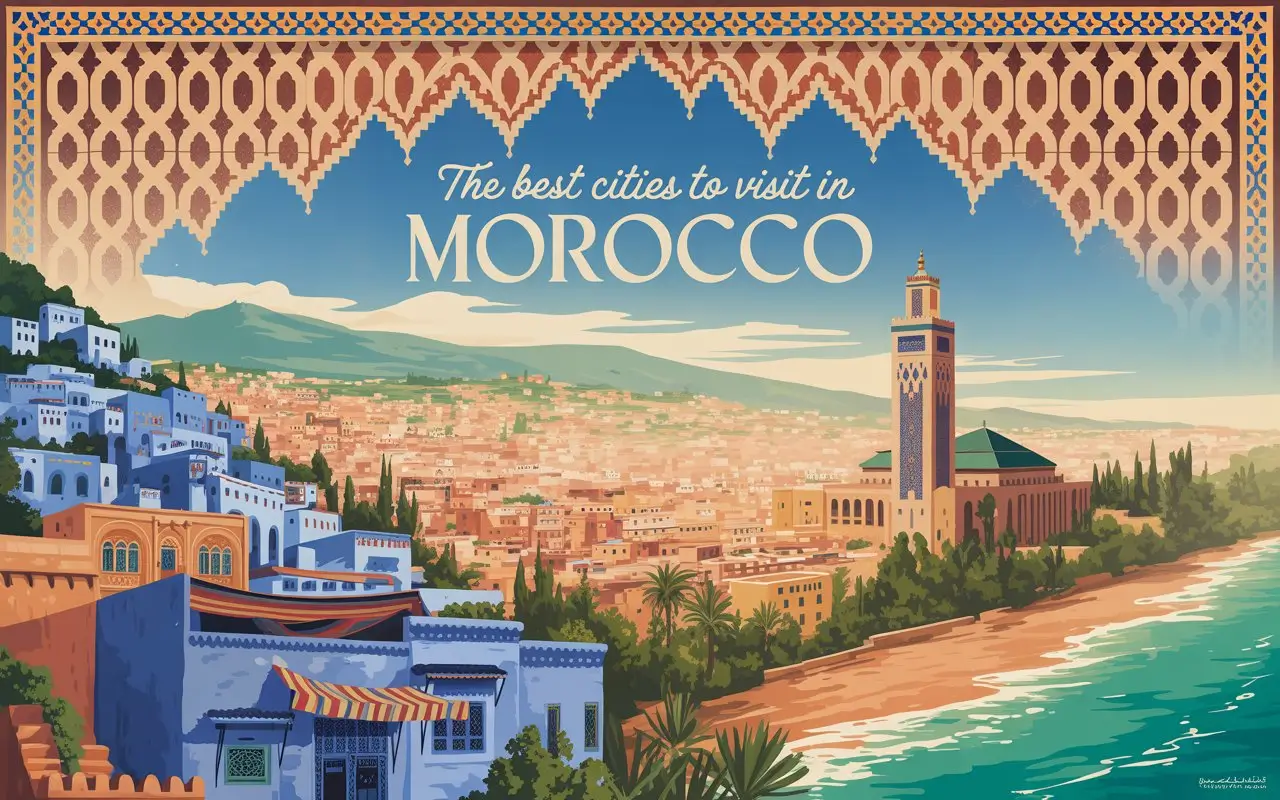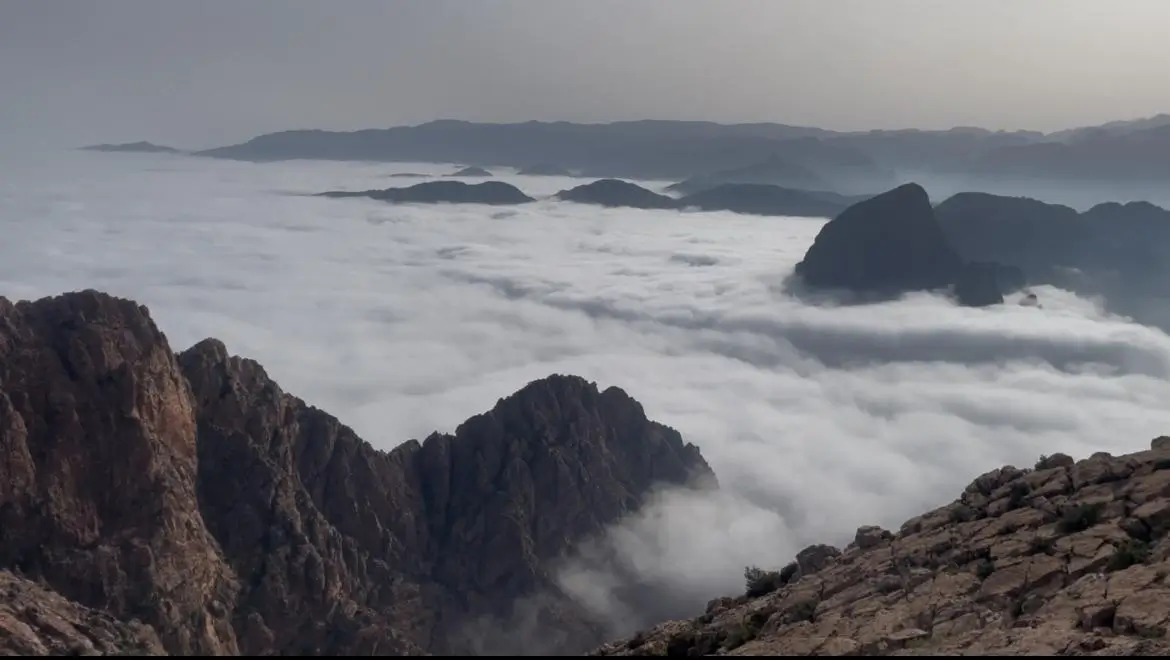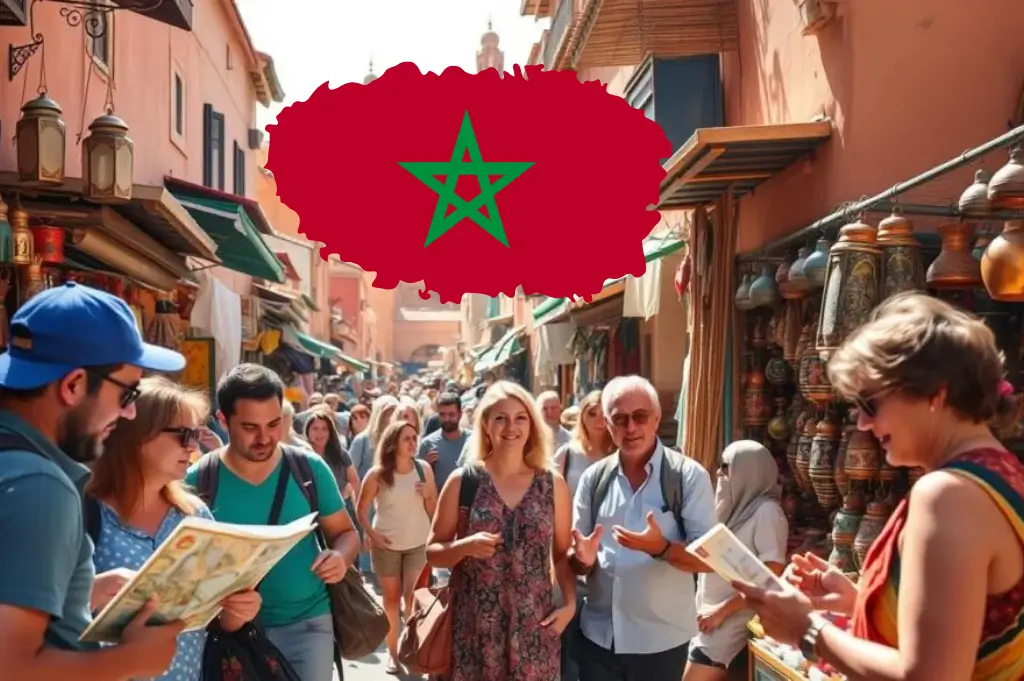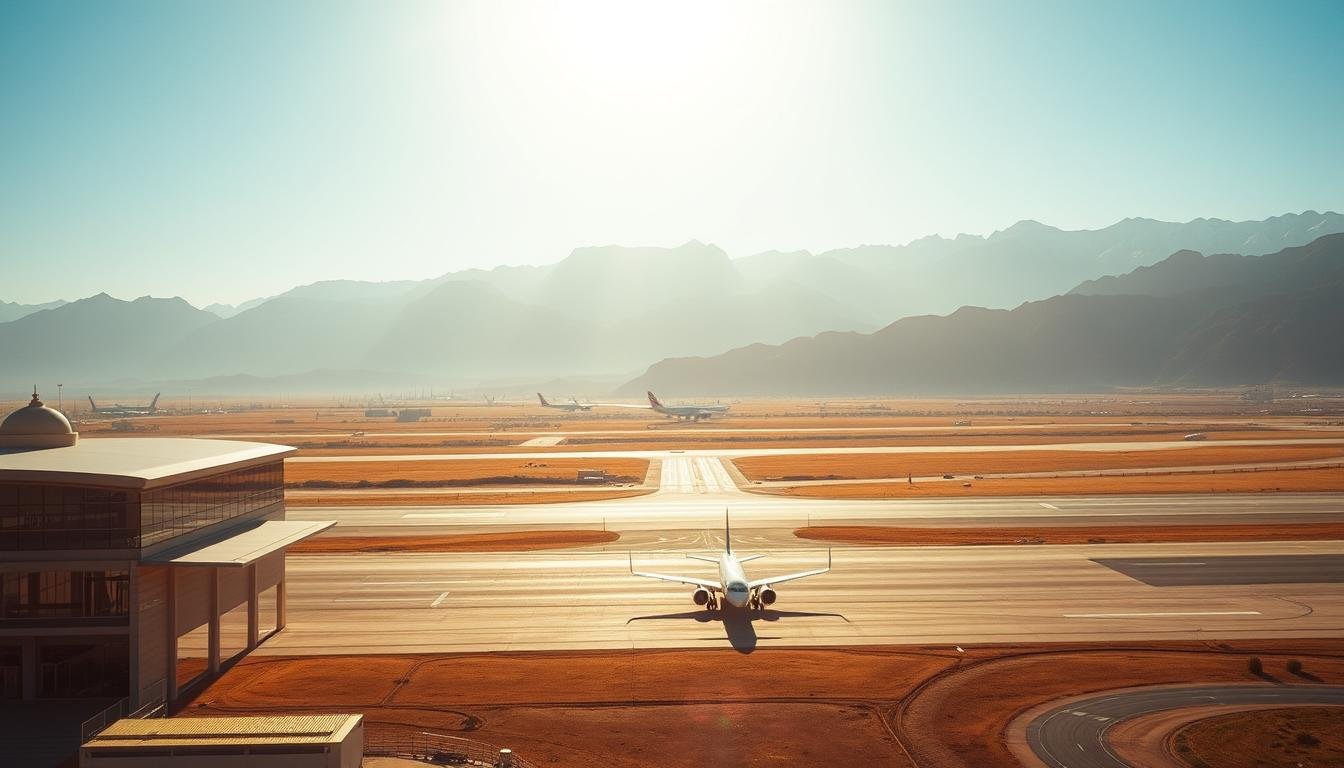Best Time to Visit Morocco
When is the Best Time to Visit Morocco?
Did you know Morocco is a year-round destination? It offers a wide range of experiences for travelers. From bustling cities to serene seaside escapes, and from high mountain passes to desert dunes, Morocco has something for every traveler.
Deciding when to travel to Morocco depends on your plans. The country’s climate and tourist seasons change a lot across different areas. Whether you want a relaxing trip or an exciting adventure, knowing the best time to visit Morocco is key to planning your journey.
Table of Contents
Key Takeaways
- Morocco is a year-round destination with diverse experiences.
- The best time to visit depends on your itinerary.
- Climate and tourist seasons vary across different regions.
- Understanding the best time to visit can enhance your trip.
- Morocco offers a range of activities for different travelers.
Understanding Morocco’s Diverse Climate Zones
Knowing Morocco’s climate zones is key for a great trip. The country’s geography spans many climates, from the cool Atlas Mountains to the hot Sahara Desert. This means weather changes a lot across different areas.
Coastal Mediterranean Climate
The coastal parts of Morocco have a Mediterranean climate. This means mild winters and warm summers. Cities like Casablanca and Rabat are pleasant all year, perfect for those who like milder weather.
The coast is cooler than the inside during summer. This offers a nice break from the heat.
Interior Continental Climate
The interior of Morocco has a continental climate. It has hot summers and cold winters. Cities like Marrakech and Fez get very hot in summer, over 100°F (38°C).
Winters can be cool, especially mornings and evenings. So, remember to pack layers for your visit.
Atlas Mountain Alpine Climate
The Atlas Mountains have an alpine climate. They get a lot of snow in winter, making them great for skiing. Even in summer, the high elevations stay cool, offering a cool escape from the heat below.
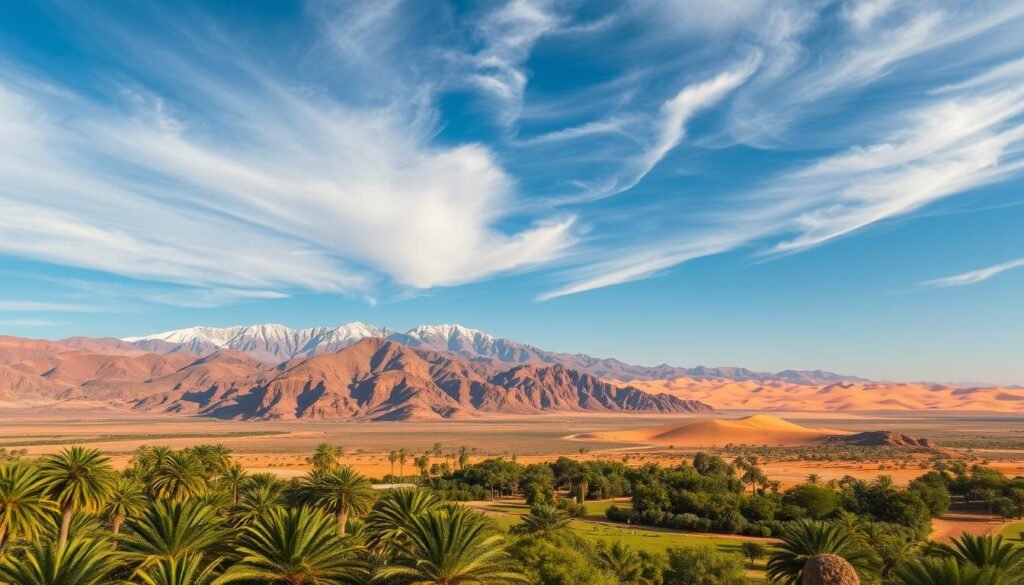
| Climate Zone | Characteristics | Best Time to Visit |
|---|---|---|
| Coastal Mediterranean | Mild winters, warm summers | Year-round |
| Interior Continental | Hot summers, cold winters | Spring (March to May) or Fall (September to November) |
| Atlas Mountain Alpine | Significant snowfall in winter, cool summers | Winter (December to February) for skiing, Summer for hiking |
By knowing these climate zones, you can plan your Morocco trip better. Choose the best times and places to visit based on your preferences and plans.
Best Time to Visit Morocco
Morocco welcomes visitors all year, but spring and fall are the best times. These seasons offer great weather and cultural experiences. They are perfect for exploring this North African country.

Spring (March to May): Ideal Conditions
Spring in Morocco is lovely, with mild weather and beautiful landscapes. The Atlas Mountains are stunning, with wildflowers and good hiking. It’s great for outdoor fun like trekking and biking.
The cities buzz with life in spring. Marrakech is especially vibrant, with lively souks and tasty street food. It’s a perfect time to see Morocco’s rich history and culture.
Fall (September to November): Perfect Balance
Fall in Morocco is also excellent, with warm weather and fewer crowds. The heat of summer is gone, making it easy to explore. It’s perfect for desert adventures with comfortable temperatures and stunning sunsets.
Fall brings the Marrakech International Film Festival, drawing visitors worldwide. It’s also great for outdoor activities like hiking in the High Atlas or relaxing on beaches.
Avoiding Extreme Weather Periods
While Morocco is open all year, some times are better than others. Summer is very hot, especially in the desert. Winters can be cold, especially in the mountains. Spring and fall are more comfortable and enjoyable.
“The best time to visit Morocco is during spring or fall, when the weather is warm but pleasant, unlike the cold temperatures and snow of winter, or the scorching heat of summer.”
Choosing the right time to visit Morocco ensures a great trip. You’ll get to enjoy all this fascinating country has to offer.
Summer Travel in Morocco (June to August)
Summer travel to Morocco needs some planning. It’s off-peak due to the heat, but there’s still much to enjoy. This vibrant country welcomes you with open arms.
Coastal Destinations: Escaping the Heat
Heading to Morocco’s coast is a great way to avoid the summer heat. Essaouira and Agadir offer a cool ocean breeze and nice temperatures. They’re much cooler than inland areas.
As a local proverb says, “The sea is the mirror of the soul.” In summer, these coastal towns are ideal for relaxation. Enjoy water sports, visit markets, and try fresh seafood.
Managing High Temperatures in Imperial Cities
Coastal areas offer relief, but imperial cities like Marrakech and Fez can get very hot. To stay cool, start your day early. Explore the cities when it’s cooler, in the morning.
- Stay hydrated by drinking plenty of water.
- Take breaks in shaded areas or riads with pools.
- Explore the souks and historical sites early in the morning or later in the evening.
Summer Packing Essentials
Packing the right gear is key for a comfortable summer trip to Morocco. You’ll need lightweight, breathable clothes, sun protection, and comfy shoes.
“The journey of a thousand miles begins with a single step,” and being well-prepared makes all the difference.
Remember to pack a light scarf or shawl for cooler evenings. This is especially important in the desert or mountains.
Winter Experiences in Morocco (December to February)
Winter in Morocco is special, with warm sunshine in the south and snow in the Atlas Mountains. This mix makes Morocco a great place to visit in winter.
Southern Regions: Winter Sun Getaways
The southern parts of Morocco, like Agadir and the Souss-Massa National Park, are perfect for a winter sun trip. They have mild weather, great for hiking and exploring outdoors.
- Agadir: Known for its beautiful beaches and golf courses.
- Souss-Massa National Park: A haven for birdwatchers and nature lovers.
- Taroudant: Often called the “granddaughter of Marrakech” due to its beautiful architecture.
Atlas Mountains: Snow Sports and Activities
The Atlas Mountains are a winter sports lover’s dream. They get a lot of snow, perfect for skiing, snowboarding, and more.
| Mountain Resort | Activities | Average Snow Depth |
|---|---|---|
| Oukaïmeden | Skiing, Snowboarding | 2-3 meters |
| Mischliffen | Skiing, Snowboarding, Sledding | 1.5-2.5 meters |
Winter Travel Considerations
Traveling to Morocco in winter means dealing with different climates. The south is warm, but the mountains are cold. Some places might be hard to reach because of snow.
Packing layers is key, and always check the weather forecast. Some ski resorts need special gear, so plan ahead.
Knowing about these winter experiences helps plan your trip to Morocco. You can enjoy the country’s varied climates and activities.
Navigating Morocco During Ramadan
Traveling to Morocco during Ramadan needs some planning. Ramadan is a month of fasting, changing the culture and social scene. This can affect your trip.
How Ramadan Affects Tourist Services
Many food places and cafes close during the day in Ramadan. But, hotels and some restaurants stay open. They might serve food in a quieter setting. It’s good to plan your meals and drink plenty of water.
Key Changes in Tourist Services:
- Reduced dining options during the day
- Some shops may have limited hours
- Tourist attractions remain open but may have adjusted hours
Cultural Experiences During the Holy Month
Ramadan is a special time to see Morocco’s culture. You can join iftar (break-fast) events, go to cultural events, and feel the Moroccan hospitality.
Tips for Respectful Travel During Ramadan
To travel well during Ramadan, follow these tips:
- Be mindful of local customs and dress modestly
- Avoid eating, drinking, or smoking in public during fasting hours
- Be patient and understanding of the local culture
Respecting these customs will make your trip better and your interactions with locals more enjoyable.
| Aspect | Pre-Ramadan | During Ramadan |
|---|---|---|
| Dining Options | Wide availability | Limited during the day |
| Shopping Hours | Regular hours | May have reduced hours |
| Tourist Attractions | Normal operating hours | May have adjusted hours |
Timing Your Visit Around Moroccan Festivals
The rhythm of Morocco is best felt during its cultural festivals. Morocco has many festivals throughout the year. Each festival gives a unique look into the country’s rich culture.
Major National Celebrations
Morocco celebrates several national festivals that are worth seeing. Some of the most significant include:
- The Fez Festival of World Sacred Music, which brings together musicians from around the globe.
- The Marrakech International Film Festival, showcasing the best of Moroccan and international cinema.
- Independence Day on November 18th, commemorating Morocco’s independence.
Regional Festivals Worth Experiencing
Beyond national celebrations, Morocco’s regions have their own festivals. For instance:
- Essaouira’s Gnaoua and World Music Festival, celebrating Gnaoua culture and world music.
- The Rose Festival in El Kelaa M’Gouna, celebrating the rose harvest in the valley.
These regional festivals show the diversity of Moroccan culture. They also give visitors a chance to connect with local traditions.
Festival Travel Planning Tips
To enjoy your visit during a Moroccan festival, consider these tips:
- Book accommodations early, as festivals attract large crowds.
- Research the festival schedule to plan your itinerary.
- Be prepared for larger than usual tourist numbers and potential changes in local routines.
By timing your visit around these festivals, you can dive into Morocco’s vibrant culture. This will make your trip unforgettable.
Budget-Friendly Travel Timing for Morocco
Morocco’s climate and events change the best visit time. Knowing the tourist seasons helps plan a budget trip.
Peak Season (April-May, September-October): What to Expect
April, May, September, and October are Morocco’s peak seasons. The weather is nice, and there are many cultural events. But, expect more people and higher prices. You’ll find a lively scene and lots to do.
- Accommodation prices go up, especially in Marrakech and Fez.
- More people mean a busier, more exciting experience.
- Festivals like the Marrakech Popular Arts Festival happen, starting in July but with early events in peak season.
As one travel expert notes,
“The peak season is the best time to experience Morocco’s rich cultural heritage, but it’s essential to plan ahead to manage costs.”
Shoulder Season Advantages (March, November)
March and November are Morocco’s shoulder seasons. They offer nice weather and lower prices. Here’s what you can expect:
- Perfect temperatures for city and nature explorations.
- Less crowded, for a more peaceful trip.
- Lower prices for places to stay and tourist services.
Traveling in the shoulder season is smart for saving money without missing Morocco’s charm.
Low Season Travel (Summer Heat, Winter Months)
Visiting Morocco in the low season, like summer and winter, is cheap. The weather is extreme, but you can:
- Get big discounts on places to stay and tourist services.
- Have a quiet trip, as most tourists stay away.
- Discover Morocco’s south in winter for a warm getaway.
To enjoy Morocco in the low season, be ready for the weather and plan your activities wisely.
Best Times for Specific Moroccan Experiences
The best time to enjoy Morocco’s varied landscapes and activities depends on what you’re looking for. Whether you’re interested in desert adventures, coastal relaxation, city exploration, or mountain trekking, Morocco has something to offer throughout the year.
Desert Adventures: When to Visit the Sahara
The Sahara Desert is a must-visit destination in Morocco, but the best time to visit depends on your tolerance for heat. The cooler months from October to February are ideal for desert adventures. This makes it perfect for camel trekking and camping under the stars.
Coastal Experiences: Beach Season Guide
Morocco’s coastline offers beautiful beaches and a relaxed atmosphere. The warmest months from June to September are perfect for coastal experiences. This is ideal for swimming, surfing, and sunbathing. Popular coastal towns like Essaouira and Taghazout are bustling during this time.
City Exploration: Comfortable Sightseeing Weather
Exploring Morocco’s vibrant cities is a highlight of any trip. The spring (March to May) and fall (September to November) seasons offer comfortable temperatures. This makes it ideal for sightseeing in cities like Marrakech, Fez, and Rabat. You can wander through bustling souks, visit historic landmarks, and enjoy the local cuisine without the extreme heat.
Mountain Trekking: Seasonal Hiking Windows
For those interested in mountain trekking, the Atlas Mountains offer challenging and rewarding trails. The best times for mountain trekking are during the spring (March to May) and fall (September to November). When the weather is mild and the trails are accessible. Summer can be too hot, while winters may bring snow, making some trails impassable.
Month-by-Month Morocco Weather and Travel Guide
Morocco’s weather changes a lot by region and season. Knowing the weather each month can help you plan a great trip.
Winter Months (December-February)
Winter in Morocco is cool, especially in the mornings and evenings. The south, like Agadir, is perfect for a warm winter getaway. Temperatures there range from 12°C to 17°C (54°F to 63°F).
- December: Enjoy festive atmosphere and mild temperatures in coastal areas.
- January: Experience snow sports in the Atlas Mountains.
- February: Visit the Sahara Desert for a unique winter landscape.
Spring Months (March-May)
Spring in Morocco is lovely, with nice temperatures and blooming landscapes. It’s great for city tours, outdoor fun, and local culture.
Key highlights of spring in Morocco:
- March: Witness the blooming almond trees in the Atlas Mountains.
- April: Enjoy the mild weather and start of the festival season.
- May: Explore the vibrant cities and enjoy outdoor activities like hiking.
Summer Months (June-August)
Summer in Morocco is hot, especially in the desert and inland cities. But, coastal areas are cooler, perfect for summer escapes.
“The coastal towns like Essaouira and Tangier offer a refreshing escape from the summer heat.”
- June: Start of the hot summer months; ideal for beach activities.
- July: Peak tourist season; enjoy the vibrant atmosphere.
- August: Continue to enjoy the warm weather and coastal activities.
Fall Months (September-November)
Autumn in Morocco is warm and pleasant, making it a great time to visit. The crowds are gone, and the weather is perfect for sightseeing and outdoor fun.
Fall highlights:
- September: Enjoy the lingering summer warmth and start of the cultural festival season.
- October: Experience the comfortable temperatures and explore the imperial cities.
- November: Visit the Sahara Desert before the winter chill sets in.
Conclusion: Planning Your Perfect Morocco Vacation
Now that you’ve learned about Morocco’s climate, tourist seasons, and cultural events, you’re set to plan your dream trip. The best time to visit Morocco varies based on what you’re looking for. Whether it’s comfortable weather, exciting festivals, or beach relaxation, Morocco has it all.
With the info from this article, you can choose the best time for your visit. Spring and fall offer great weather, while summer is perfect for beach trips. Winter is great for snow sports and escaping to warmer places. Also, visiting during Moroccan festivals can make your trip even more special.
Plan carefully and research the best time to visit Morocco for your interests. With this knowledge, you’ll have an unforgettable journey in this amazing North African country.
FAQ
What is the best time to visit Morocco?
The best times to visit Morocco are spring (March to May) and fall (September to November). The weather is nice and perfect for exploring.
What are the climate zones in Morocco?
Morocco has different climates. You’ll find the Mediterranean coast, the interior, and the Atlas Mountains. Each has its own weather.
How does the weather vary across different regions in Morocco?
Weather in Morocco changes a lot. The coast is milder, the interior is hotter in summer and colder in winter. The mountains are colder and can snow.
What are the peak tourist seasons in Morocco?
Spring (April-May) and fall (September-October) are the busiest times. The weather is great, and services are fully open.
How does Ramadan affect tourist services in Morocco?
Ramadan might mean some places open later. But, with planning, you can still enjoy Morocco’s culture and sights.
What are the best months to visit Morocco’s desert regions?
Winter (December to February) or spring (March to May) are best for the Sahara. The weather is more comfortable.
Can I enjoy snow sports in Morocco?
Yes, the Atlas Mountains offer snow sports in winter (December to February). There’s enough snow then.
How can I escape the heat during summer in Morocco?
Visit coastal places like Essaouira or Tangier in summer. They’re cooler than cities inland.
What are the benefits of traveling to Morocco during the shoulder season?
Shoulder season (March, November) has fewer tourists and lower prices. The weather is still nice.
What should I pack for a trip to Morocco during the summer?
Pack light, breathable clothes, sunscreen, a hat, and sunglasses for summer. They protect you from the sun.
Are there any specific cultural events or festivals I should plan my trip around?
Yes, Morocco has many festivals like the Marrakech International Film Festival or the Essaouira Gnawa Music Festival. They’re great to plan your trip around.


